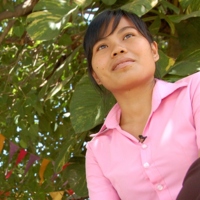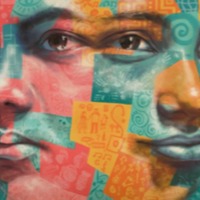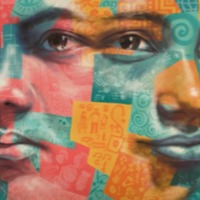
Grace
Grace was educated until the 10th grade in Nigeria, after which she was sent to work to help support her family, who lived in poverty. She worked for three years at various jobs, during which time she was raped and gave birth to a son. Her father told her that as a woman, she was “predestined by God to save her family from poverty by going to Europe to earn money.” He introduced her to a woman whose sister lived in Germany. Grace was told that she would have to repay the travel costs by working for the woman’s sister, after which she could work as a babysitter or in a restaurant to send money back home. Grace didn’t have an understanding of the amount she would have to repay, because the amount was in German currency, but she decided to take the chance because she didn’t have better prospects for her life in her country and her family was pressuring her. As is typical in her community, she underwent a Juju (Voodoo) ritual where she swore never to betray the contact in Germany and that she would pay all the debts. Grace talks about how she believes the problem of sexual exploitation should be addressed, based on her experiences.

Sina
Sina was born in Vietnam and enslaved in Cambodia, where she was forced into prostitution and drugged to become easier to control. Sina recalls that the Cambodian police, rather than help her home to Vietnam, took her to another brothel. At the time of narrating her story, she worked for the Somaly Mam Foundation as leader of its Voices for Change programme, and she reflects on both the satisfaction and difficulties of her work helping others escape their enslavement. Many Vietnamese women and children are misled by fraudulent employment opportunities and sold to brothel operators on the borders of China, Cambodia, and Laos, and elsewhere in Asia, including Thailand, Malaysia, Republic of Korea, Taiwan, and Singapore. Some Vietnamese women who travel abroad for internationally brokered marriages or jobs in restaurants, massage parlors, and karaoke bars—mostly to China, Malaysia, and Singapore—are subjected to domestic servitude or forced prostitution.

Rita
Rita was drugged and trafficked from Nepal into India in 1998 at the age of 19. She was eventually helped by the NGO “Maiti Nepal.” Here she narrates a series of experiences that are rooted in her identity as a woman. The traffickers tricked her by explaining that they needed her to help smuggle diamonds—because “girls were not checked as thoroughly as men” by border guards. One of the first incidents in India is the replacement of her trousers for a long skirt. She notes that when women are enslaved they are “made ‘sisters.’” She goes on to observe the psychology of women who refuse to leave because they “will not be accepted by society.” She describes the horror of public questioning about her experiences in sex slavery. And she tells the stories of two other women—Vidhya and Maili. Thousands of Nepali women and children are trafficked every year across the border into Indian brothels, and Nepal has an unknown number of internal sex trafficking victims as well. In response to a dowry practice, where they must offer gifts that could be worth several years’ income, some parents sell their daughters rather than have them married. Other women are drugged and taken across the border, like Rita. Once enslaved, Nepali girls and women are more likely to be arrested than rescued by the police, and most Nepalese victims never leave India, even after liberation. Those who do are often shunned by their families and remain in Kathmandu at shelters. Another aspect of this enslavement is HIV and AIDS. Some 50 percent of those who return to Nepal are HIV-positive, and Rita makes reference to these “girls with AIDS.”

Nuch
Of the estimated 600,000 to 800,000 individuals trafficked across international borders each year, some 80 percent are women and girls. Nuch was one of the thousands of women trafficked annually out of Thailand for sexual exploitation. The major destinations include Japan, Malaysia, Bahrain, Australia, Singapore, and the US. Internal trafficking occurs within the country as well, usually from northern Thailand (where hill tribe women and girls are denied Thai citizenship). In Japan, where she was enslaved, women are trafficked from Thailand, the Philippines, Russia, and Eastern Europe, and on a smaller scale from Colombia, Brazil, Mexico, Burma, and Indonesia. Nuch left for Japan in March 1992 at the age of 27 and was held in Tokyo. She explains that she apparently owed money for the trip and had to work off her debt with clients. After three months in slavery, she was taken to a police station, detained for several months in solitary confinement, and transferred to an immigration detention center, where she was held until the Thai Embassy issued travel documents. She flew back to Thailand in March 1993. Her narrative describes the involvement of other women in the process of enslavement. Her experience was at the hands of a long series of women: a Thai woman who got “extra points” by betraying her, a female agent, a woman who was the “boss,” and the Taiwanese “mama” (brothel manager). The percentage of female traffickers is rising. Some have been trafficked themselves and then reappear as recruiters or pimps. Others are blackmailed by criminals. Female traffickers are often the most convincing at deceiving women and girls into accepting fake job offers and so beginning the journey into slavery.

Dara
“Dara” was enslaved for sexual exploitation as a child in Cambodia. Here she discusses her enslavement and the psychological impact that this has had on her, explaining the difficulty of reintegrating into society after her enslavement, and that she feels “finished” and “dead.” She also talks about her work as a volunteer helping other survivors of slavery to train and take control over their lives. Despite significant attempts to curb the commercial sexual exploitation that Cambodia became famous for in the 1990s, NGOs report the industry has been pushed underground and sex offenders are still able to purchase sex with children through an intermediary rather than more overt selling of sex in brothels.